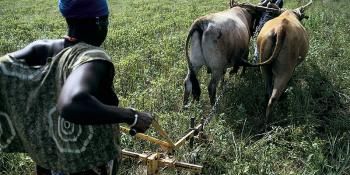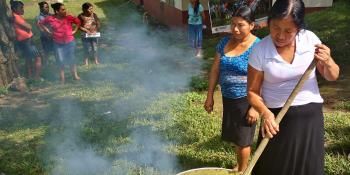The right kind of helping hand for small farmers

Luis Eduardo lays another slab of beef onto the smouldering dug-out barbeque he and his family have lit for their weekly Sunday get-together in Macaregua village, Colombia.
He stabs a generous chunk of boiled cassava with his fork.
“The day that I can’t eat with my own hand,” he says in an expansive mood, waving the cassava chunk in the air, “that will be the day that I die.”
Researchers from Bioversity International and the CGIAR Research Program on Climate Change, Agriculture and Food Security (CCAFS) spent time in Macaregua, in the central-northern department of Santander, to identify sources of vulnerability to climate change impacts and barriers to the adoption of climate-smart agriculture.
When to go it alone...
Especially if they have the foresight of a farmer like Luis Eduardo, there are many things that smallholders can and should do for themselves to build resilience to the impacts of climate change. In a meandering monologue between mouthfuls of T-bone steak, Luis Eduardo hits upon several.
Read the full story on the Thomson Reuters Foundation blog.
Related stories on the CCAFS blog:



